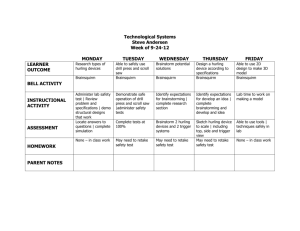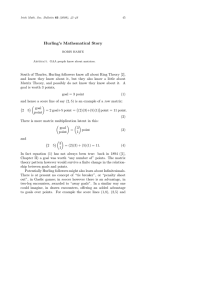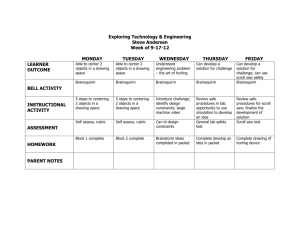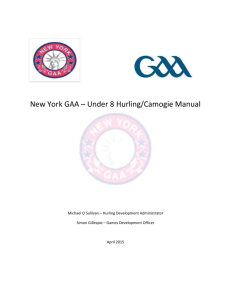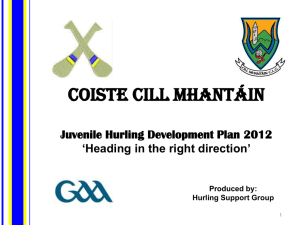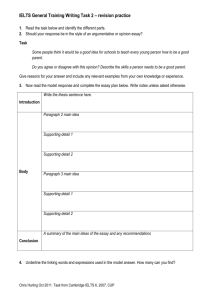The Hurling Diaries - Education in Ireland Blog
advertisement
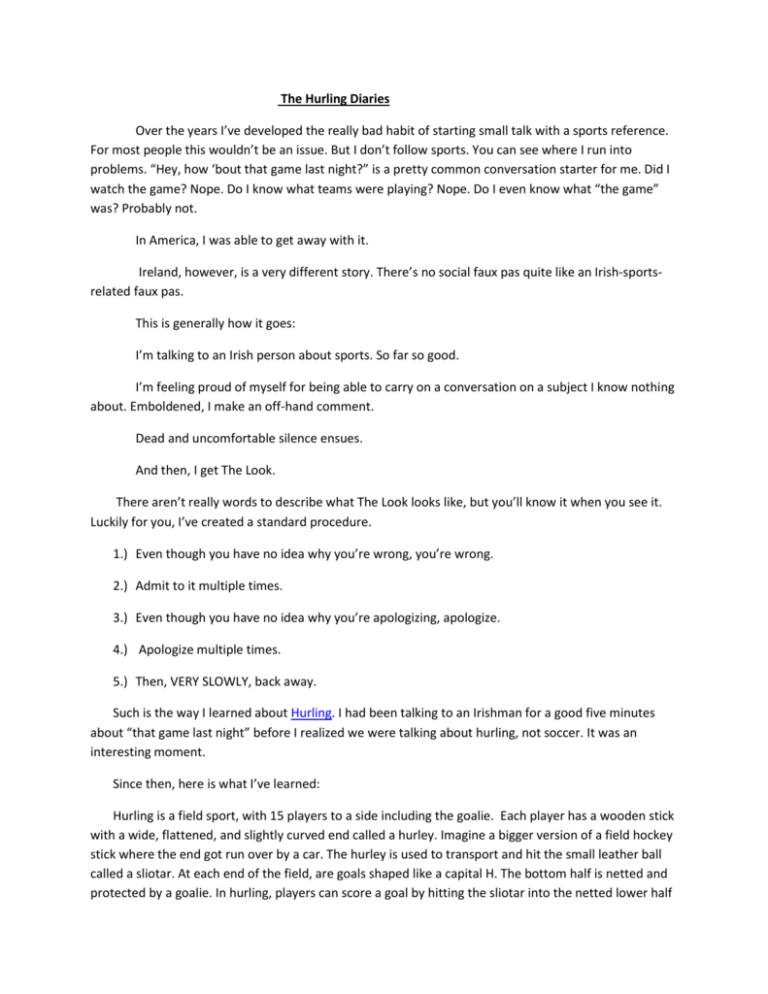
The Hurling Diaries Over the years I’ve developed the really bad habit of starting small talk with a sports reference. For most people this wouldn’t be an issue. But I don’t follow sports. You can see where I run into problems. “Hey, how ‘bout that game last night?” is a pretty common conversation starter for me. Did I watch the game? Nope. Do I know what teams were playing? Nope. Do I even know what “the game” was? Probably not. In America, I was able to get away with it. Ireland, however, is a very different story. There’s no social faux pas quite like an Irish-sportsrelated faux pas. This is generally how it goes: I’m talking to an Irish person about sports. So far so good. I’m feeling proud of myself for being able to carry on a conversation on a subject I know nothing about. Emboldened, I make an off-hand comment. Dead and uncomfortable silence ensues. And then, I get The Look. There aren’t really words to describe what The Look looks like, but you’ll know it when you see it. Luckily for you, I’ve created a standard procedure. 1.) Even though you have no idea why you’re wrong, you’re wrong. 2.) Admit to it multiple times. 3.) Even though you have no idea why you’re apologizing, apologize. 4.) Apologize multiple times. 5.) Then, VERY SLOWLY, back away. Such is the way I learned about Hurling. I had been talking to an Irishman for a good five minutes about “that game last night” before I realized we were talking about hurling, not soccer. It was an interesting moment. Since then, here is what I’ve learned: Hurling is a field sport, with 15 players to a side including the goalie. Each player has a wooden stick with a wide, flattened, and slightly curved end called a hurley. Imagine a bigger version of a field hockey stick where the end got run over by a car. The hurley is used to transport and hit the small leather ball called a sliotar. At each end of the field, are goals shaped like a capital H. The bottom half is netted and protected by a goalie. In hurling, players can score a goal by hitting the sliotar into the netted lower half past the goalie. A goal is worth three points. They can also score a point by hitting the sliotar over the top of the net, through the posts. A player cannot directly pick up the sliotar from the ground, and cannot go more than 4 steps with the ball in hand. There are no pads. I don’t think I fully appreciated hurling, though, until I went on a trip with the International Club to Croke Park (The third largest stadium in Europe situated in the heart of Dublin city.) As a distinct and ancient Irish sport, it is very tied up with Irish nationalism. While Ireland was colonized under British control, it was even banned in 1918. The British feared the strong connection hurling and other Gaelic sports had with the Irish identity, and the possible rebellion it could enable. As one of the most popular sports in Ireland, You can imagine the effects such a ban would have. It would literally be the equivalent of marching into Boston and outlawing baseball. Or going to Los Angeles and banning the Lakers. Imagine telling a Canadian that hockey is illegal. There’d be a bit of mayhem, eh? Only a couple of weeks after first arriving in Ireland, I watched the hurling championship on TV between Kilkenny and Tipperary. The likes of it I have never seen. Within a minute of sitting down to absentmindedly watch, a sickening crack marked the first show of blood. The referee, that’s right the referee, not a player, had been struck in the head with a hurley and blood was gushing from his nose. Thinking it was an unfortunate fluke, I didn’t pay much attention as play resumed. That was until five minutes later when play was again called off. I looked up to see a player unconcernedly walking around with blood trickling down his forehead. It became quickly apparent that Hurling is a tetch brutal. “Yep,” I thought to myself, “this is a sport I should probably pick up.” A few weeks later, I heard from my friend Hannah that there was going to be a hurling team for the study abroad students. Hannah, our friend Ellen and I decided to check out the first practice. It was very… interesting. The “captain” of the team was an Irish student at UL who actually played hurling. And let me tell you, he was surrounded by a pack of gems. We turned tripping into an art form. If bad aim could make a man rich, we would be millionaires. Our hand-eye coordination was second only to camels. We were the masters of hurling disasters. “I like this sport,” I decided. However, my promising hurling career was cut short. Probably because he was intimidated by our obvious athletic prowess, the Irish-Captain-Coach-Man never called another practice. I don’t blame him. Sometimes greatness needs to be contained. For now, I think I’ll just stick to lacrosse. The hurling team I was on for a day. A locker room at Croke Park with some of the different hurling jerseys. Croke Park.
